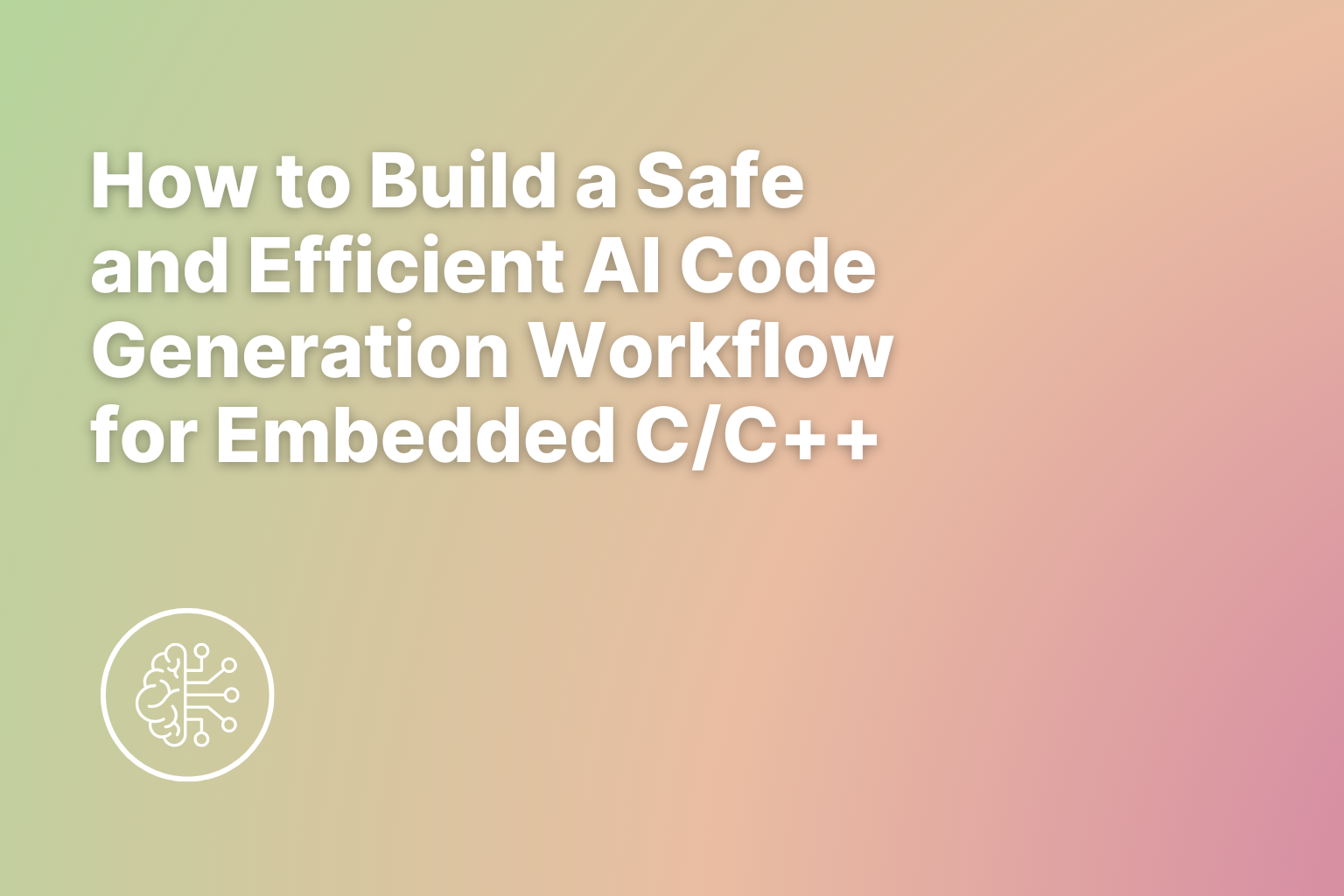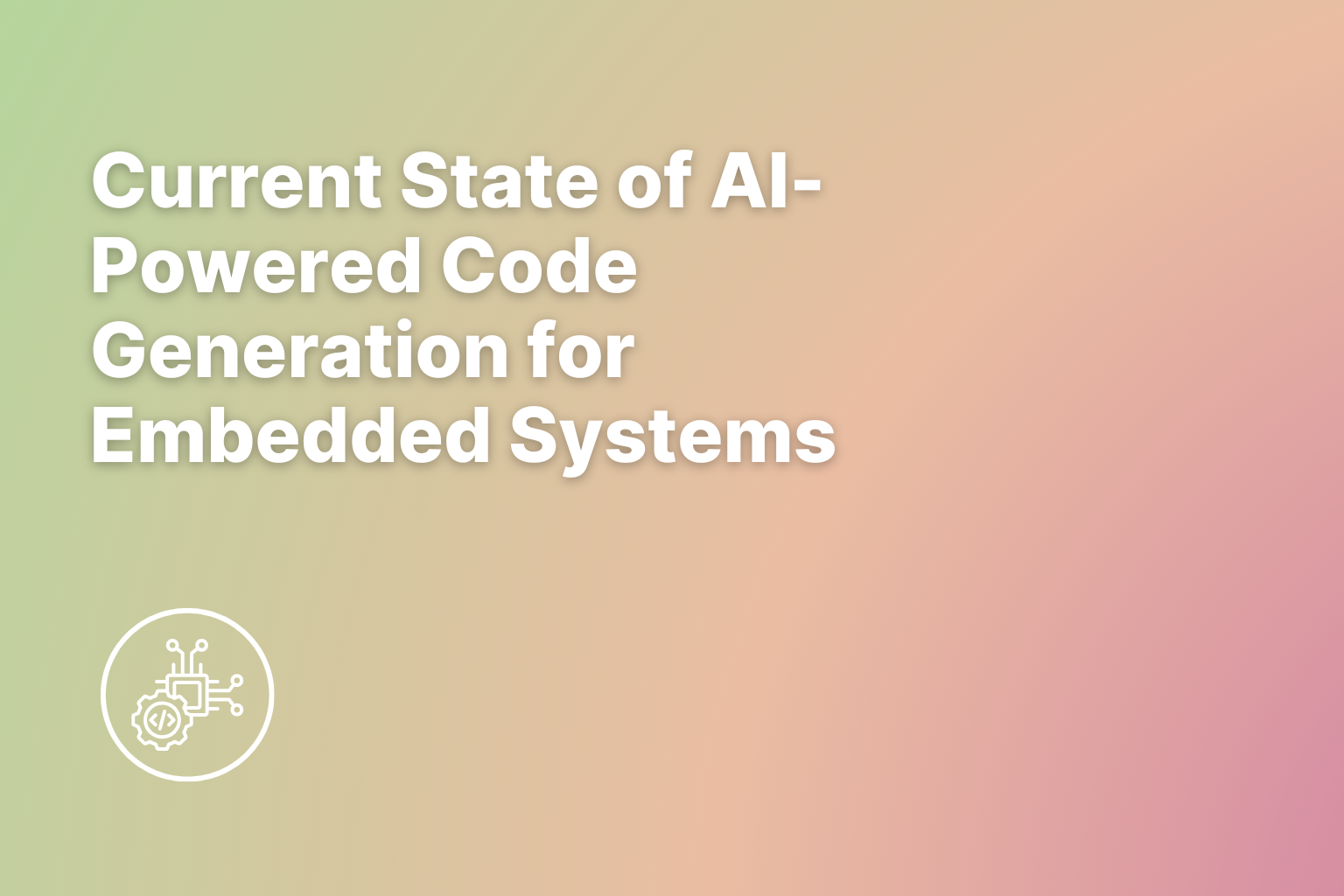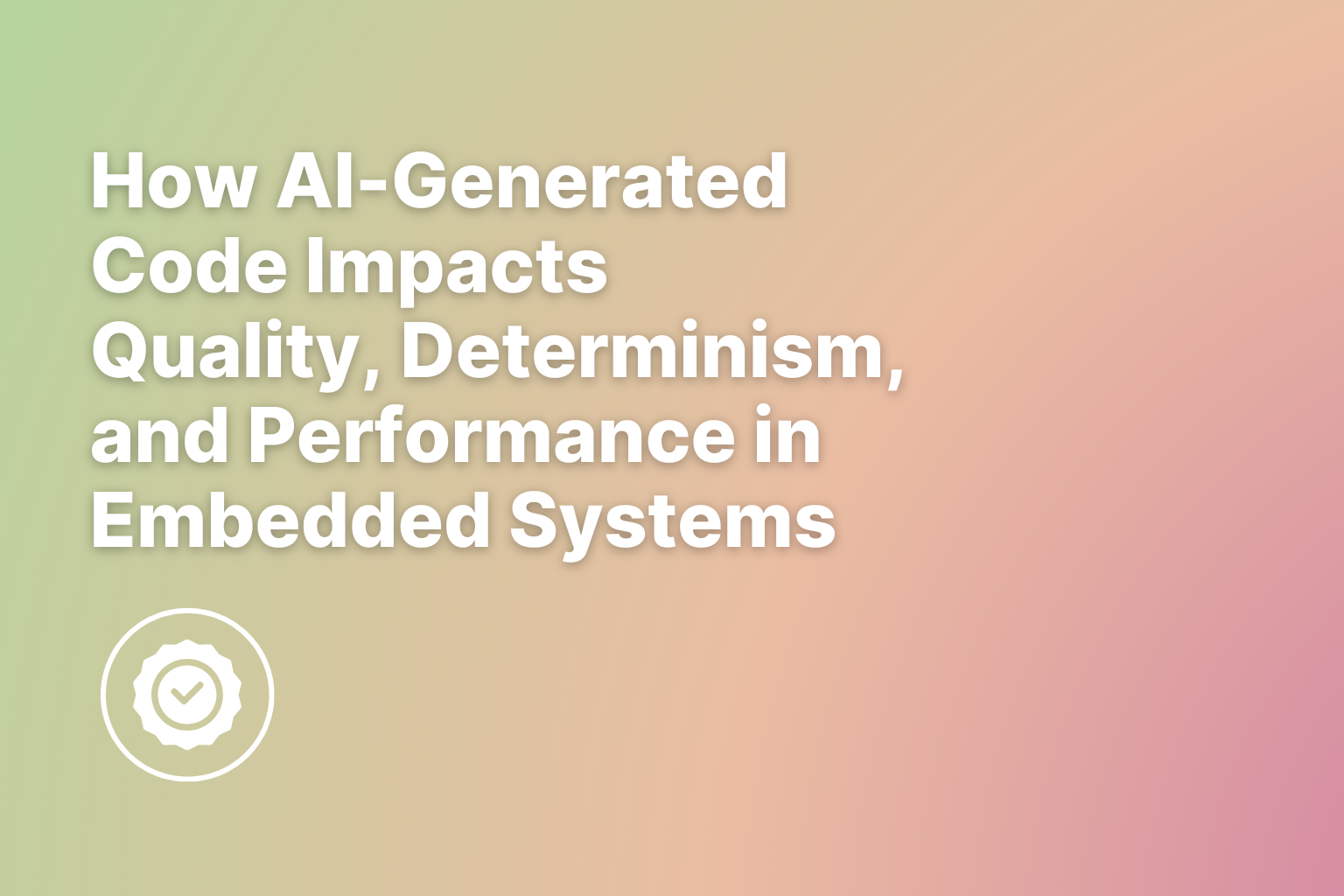AI is rewriting the rules of software development and the embedded world is no exception. While tools like GitHub Copilot and Tabnine were first designed for web or enterprise applications, they’re now finding their way into firmware teams’ toolchains. From automotive ECUs to IoT sensors, engineers are exploring how AI can help generate, test, and document embedded C/C++ code faster than ever.
But this new era also comes with a twist: the same microsecond-level timing and hardware constraints that define embedded systems are exactly what AI doesn’t “see.”
This article explores how AI code generation is transforming embedded development, its promises, pitfalls, and the path toward a hybrid workflow that combines AI speed with real-world optimization.
How AI is transforming software development
Generative AI is no longer limited to web or general-purpose application development. Tools like GitHub Copilot, Tabnine, and domain-specific AI assistants are increasingly adopted in embedded software engineering to generate C/C++ code for microcontrollers (MCUs), real-time operating systems (RTOS), and sensor interfaces.
Studies highlight measurable productivity gains: developers using GitHub Copilot report completing tasks up to 55% faster, accepting around 30% of AI suggestions in the first year. AI assistants help engineers by:
- Automating boilerplate code (peripheral initialization, RTOS task scaffolds)
- Generating function templates
- Scaffolding unit tests and test harnesses
This enables engineers to focus on high-value tasks, such as algorithm design, system integration, and performance tuning, significantly accelerating embedded software delivery.
By automating boilerplate code, generating function templates, and even scaffolding unit tests, AI-powered assistants allow engineers to focus on higher-value logic and integration, making embedded software development faster and more efficient.
Why the embedded world is different
Unlike general software, embedded systems are constrained by timing, memory, and energy budgets. These factors are not secondary, they define whether a system is functional or fails catastrophically.
For example, consider an ADAS (Advanced Driver Assistance System) module in an automotive ECU: it must process data from radar, lidar, and cameras within millisecond windows. Even a single extra instruction from AI-generated code could introduce jitter, missed deadlines, or unsafe behavior.
Similarly, IoT and robotics devices operate on tight energy constraints. An unoptimized routine can drain batteries or overheat components. As highlighted on Embedded.com, AI-generated code often lacks hardware awareness, making it risky for real-time, low-power applications.
The rapid adoption trend
AI‑assisted workflows are gaining traction in embedded development. In the automotive sector, a McKinsey survey found that about 75% of companies are piloting Gen AI applications. While the exact productivity gains for embedded firmware vary, studies in adjacent domains show time savings of 30‑50% in rapid prototyping when using generative AI. This suggests strong potential, but the embedded domain still requires careful adaptation due to hardware constraints.
However, caveats remain: most AI models are trained on generic datasets and do not account for MCU-specific constraints, interrupt latency, or safety-critical standards like ISO 26262 (automotive) or DO-178C (avionics).
👉🏻 Learn more about AI adoption in embedded software here
Common use cases in embedded engineering
AI-generated code proves particularly useful for:
- Boilerplate code: Peripheral initialization, RTOS task scaffolds, interface templates.
- Algorithm prototyping: Sensor fusion algorithms, PID controllers, data processing pipelines.
- Test harnesses and unit tests: Automatically generated test cases for regression testing.
- Documentation support: Annotated code snippets and explanatory comments
⚠️ Caveat: AI-generated code often requires manual review and optimization. Without this, firmware may consume excess CPU, fragment memory, or miss deadlines in real-world deployment.
👉🏻 Best practices for using AI-generated in firmware
Challenges of AI in embedded systems
While AI accelerates development, several critical risks exist:
- Timing violations: AI cannot predict worst-case execution paths for ISRs or real-time threads.
- Memory inefficiency: Generated code may exceed stack/heap limitations on constrained MCUs.
- Power consumption: Extra instructions, unoptimized loops, and inefficient I/O increase energy draw.
- Safety compliance gaps: AI may produce code violating MISRA C or AUTOSAR standards.
- Integration risks: Generated code may conflict with ECU architecture or zonal controller boundaries.
A robust embedded code optimization workflow is needed to mitigate these risks.
Towards a hybrid workflow: AI + optimization
The emerging best practice is a dual-layer workflow:
- Generate: Use AI tools for prototypes, boilerplate, and test scaffolds.
- Analyze & Optimize: Apply static analysis, profiling, and hardware-aware optimization to meet memory, timing, and power constraints.
- Validate: Deploy on real hardware or cycle-accurate simulators to measure performance, latency, and energy consumption.
This hybrid approach maintains AI productivity gains while ensuring deployable, real-time safe, and power-efficient firmware. It’s particularly vital for automotive, aerospace, and industrial IoT applications.
Conclusion
AI code generation is a game-changer for embedded software, accelerating prototyping and reducing repetitive coding. Yet the domain’s unique constraints (timing, memory, energy, and safety) cannot be ignored.
The future lies in AI-assisted generation paired with automated hardware-aware optimization, ensuring firmware not only compiles but performs reliably and efficiently across automotive ECUs, IoT devices, and aerospace systems.
For a deeper dive into how AI-generated C/C++ code often conceals significant performance and energy-efficiency gaps — and how to tackle them — read our article The Hidden Performance Gap in AI-Generated Code.


.svg)





.svg)